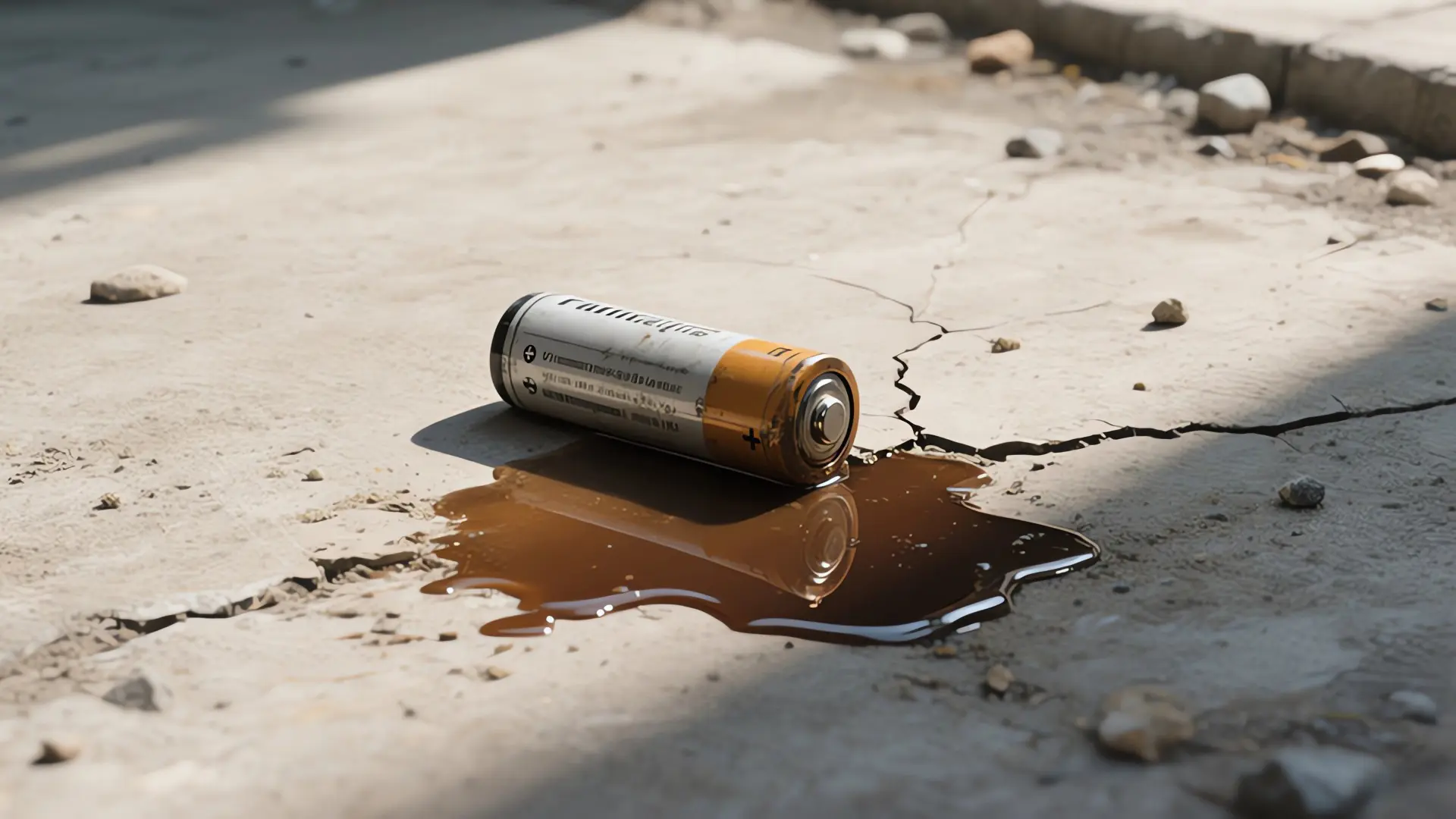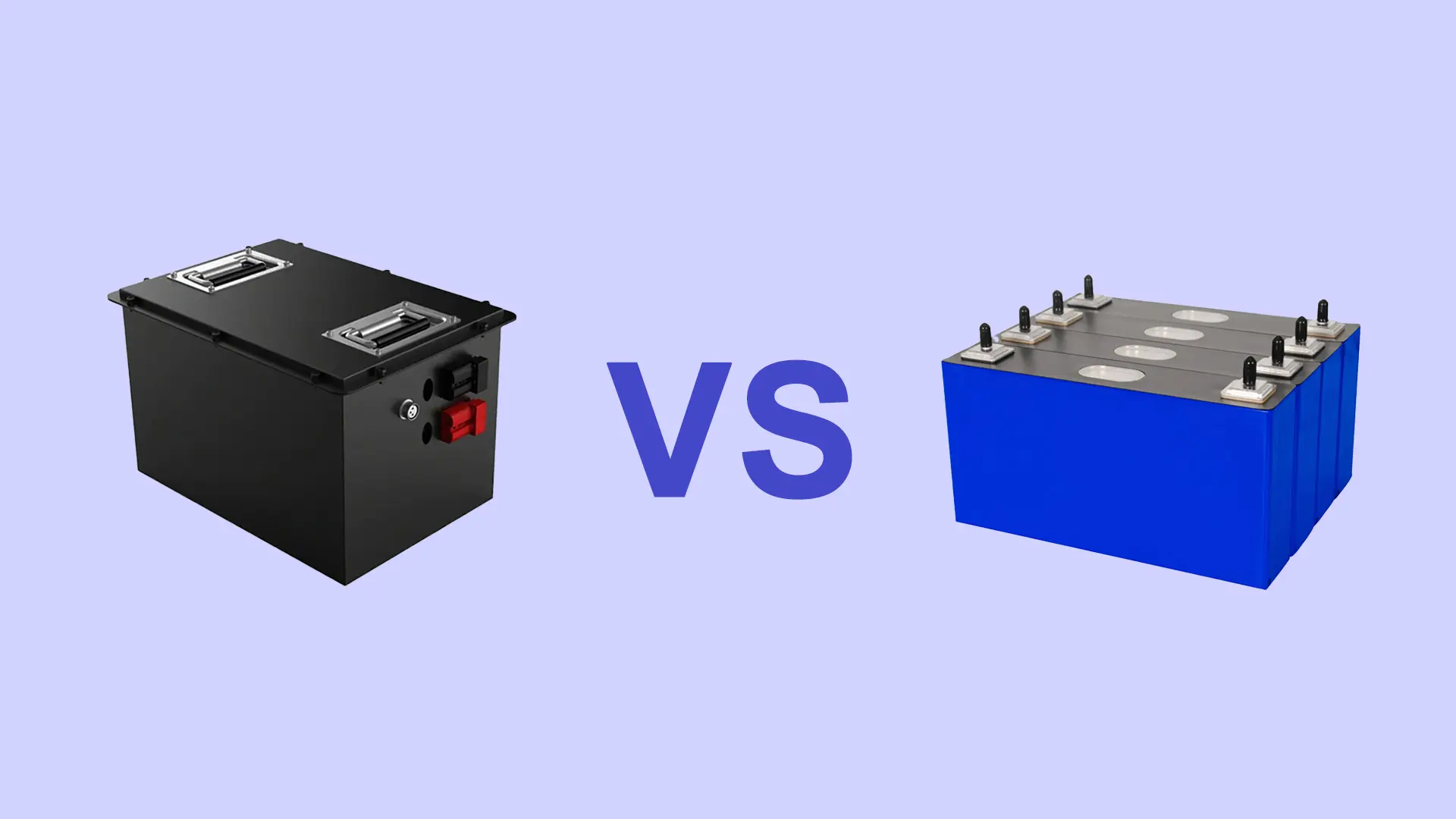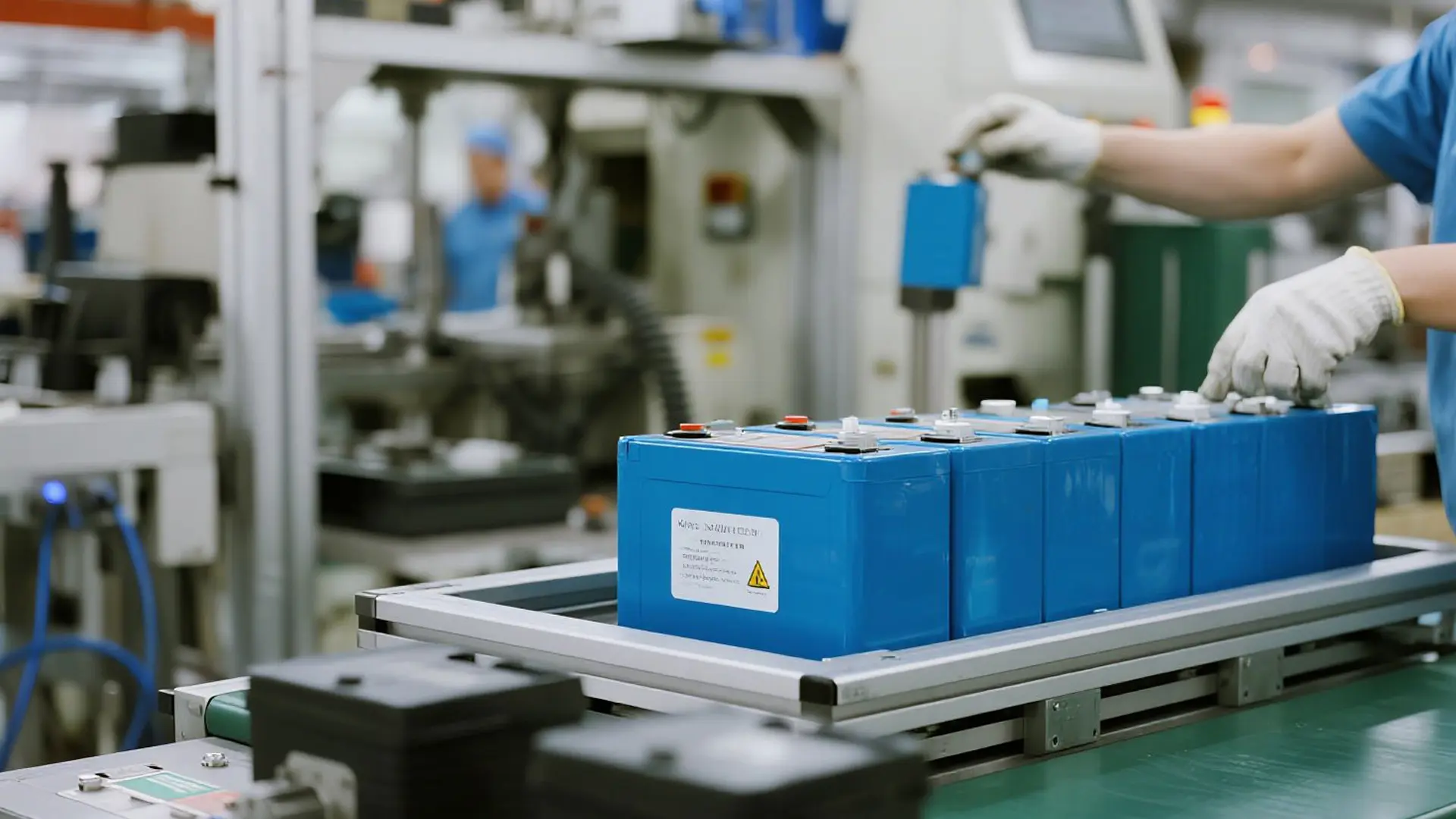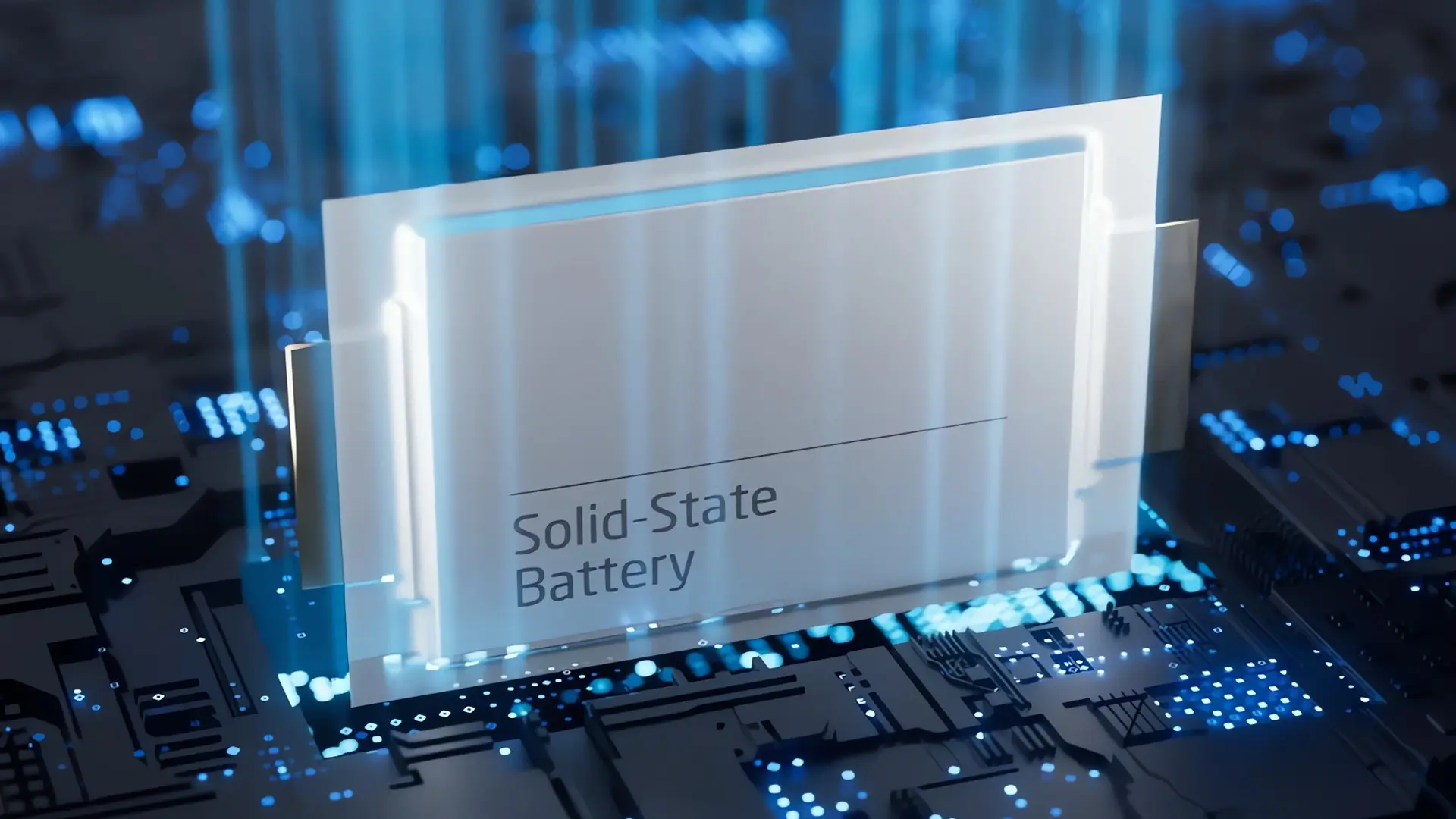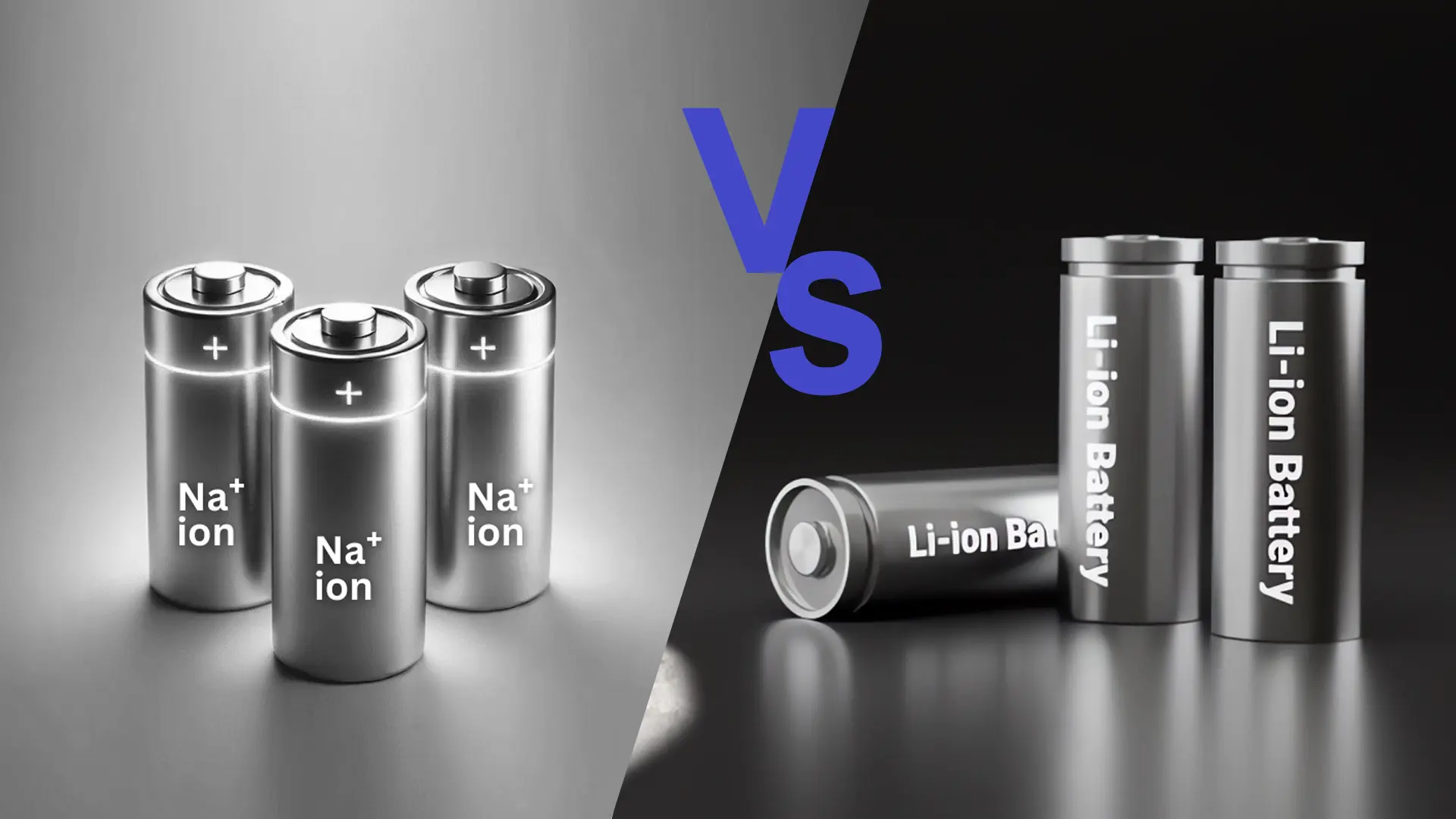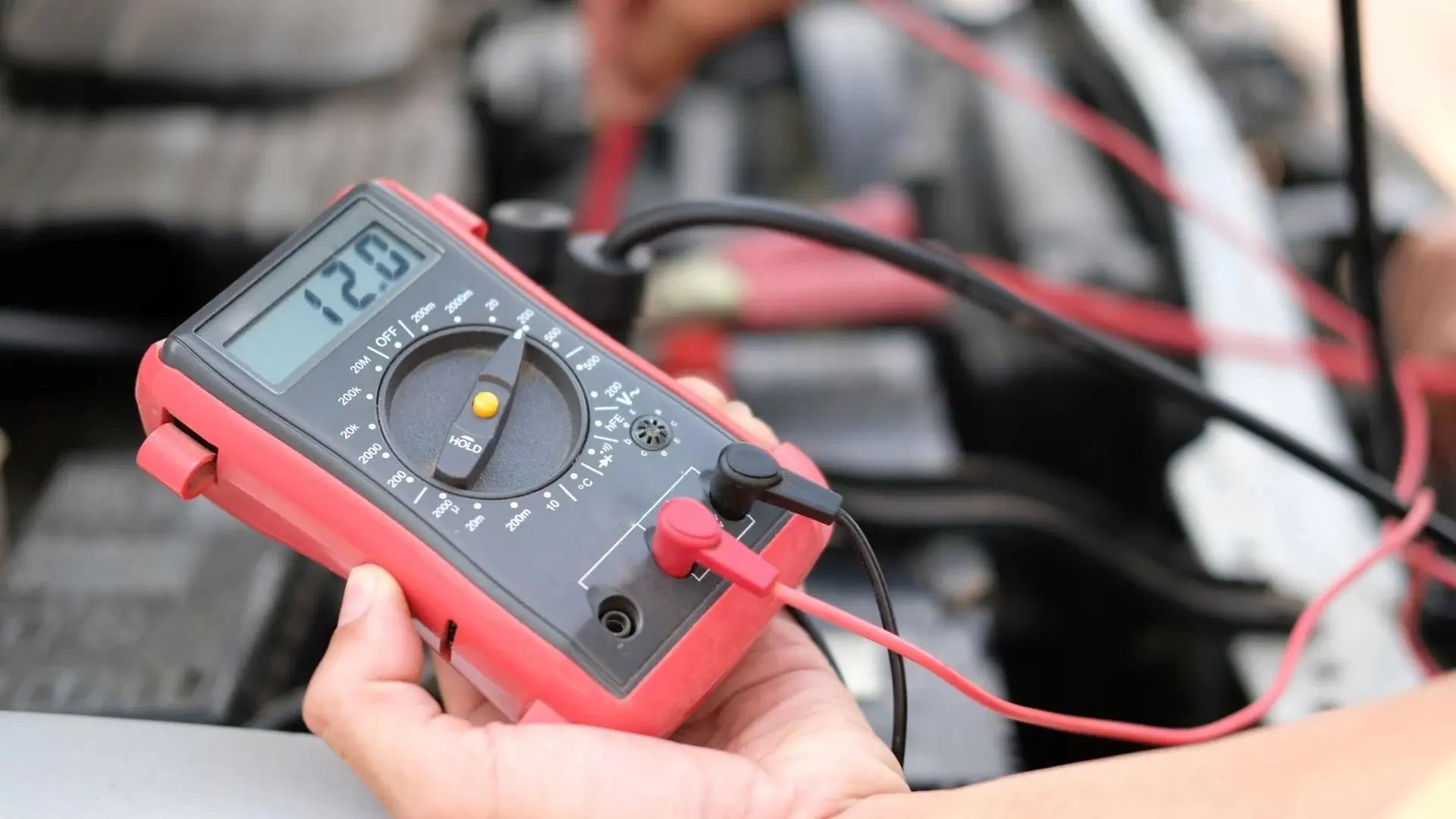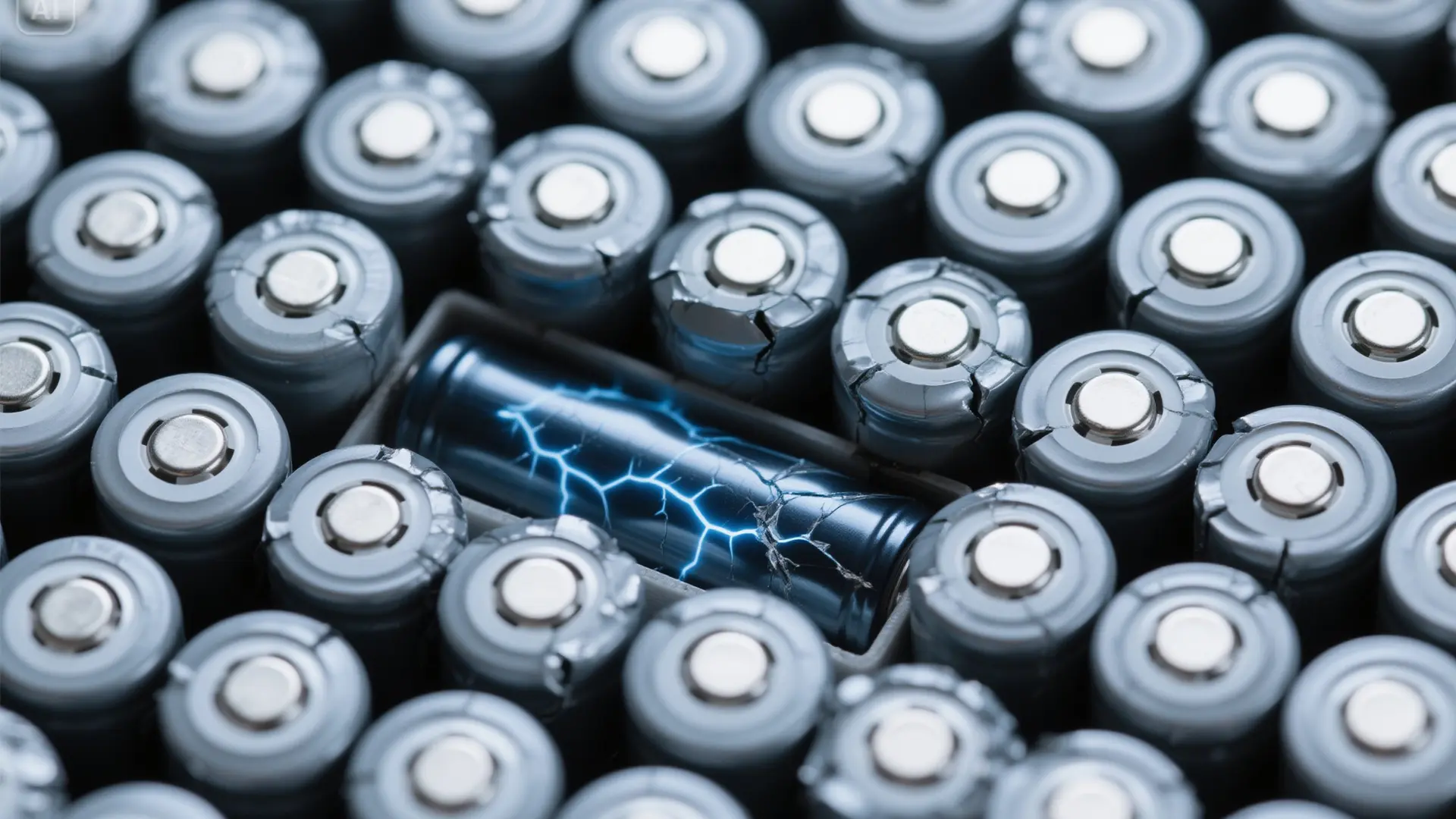Lithium battery swelling is a common issue that happens when the battery’s internal gas is generated from chemical reactions. Overcharging, physical deformation, and extreme heat are major factors that contribute to bulging lithium batteries. Battery bulging brings safety risks and environmental pollution, thereby proper dealing ways and timely replacement are critical.
Key Takeaways
- Extreme cold, hot and humid places, overcharging, physical deformation, manufacturing defects, battery aging, and failure are reasons that result in lithium-ion battery swelling.
- Using smart BMS and immersion cooling technology prevents lithium batteries from swelling. Certified charger, regular inspection, and good charging habits are vital.
- A swollen lithium battery poses a harmful risk to the environment and humans. Follow proper handling and recycling procedures to mitigate risk.
Why do Lithium Batteries Swell?
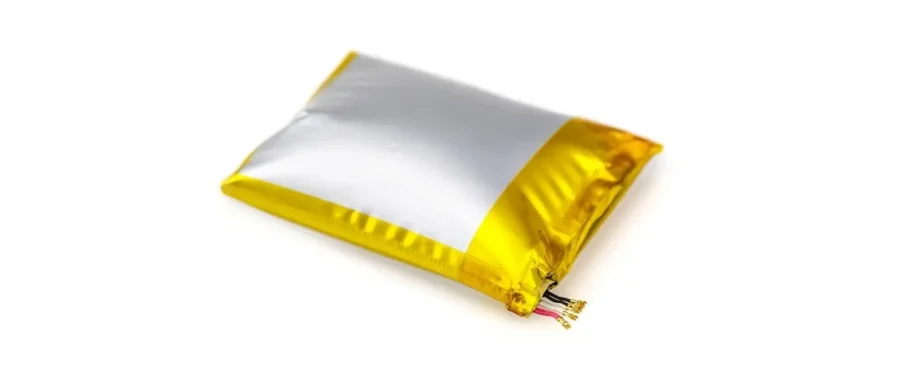
Lithium battery bulging is due to gas generation inside the cell or an abnormal increase in pressure. Overcharging, overheating, or humid environmental conditions, manufacturing defects, and battery structural aging are essential factors that contribute to battery bulging.
Overcharging and Physical Deformation
1. Long-term overcharging. This increases the battery’s internal resistance and uneven expansion of the plates, leading to internal high temperature and gas generation.
2. External collisions cause battery deformation. Puncture, extrusion, and bending deform the electrodes and damage the separator, causing a short circuit. This generates heat and produces gas, which triggers battery bulging.
Humidity and Extreme Temperature
1. Store batteries in a humid environment. It causes moisture to penetrate the battery and a chemical reaction with the electrolyte, corroding the electrode materials, making the battery cell prone to swelling.
2. High temperatures affect battery stability. Overheating increases the activity of battery compounds and accelerates battery aging, generating gases and lithium battery to expand.
3. Low temperatures increase the electrolyte’s viscosity, slowing down the movement of lithium ions. This results in lithium metal to precipitate on the negative electrode surface and react with the electrolyte to produce gas.
Manufacturing Defects
1. Uneven electrode coating. This leads to inconsistent local current density within the battery. High current density areas generate more heat, leading to local overheating and li ion battery bulging.
2. Inaccurate electrolyte injection. Excessive electrolyte overfills the battery’s interior. Generated gas cannot diffuse properly during charging and discharging, causing increased internal pressure and bulging.
3. Poor battery sealing. Oxygen and water in the air react chemically with the electrode material and electrolyte, causing battery pack swelling.
Battery Structural Aging or Failure
1. Electrode and electrolyte aging. Electrode material loss, electrolyte deterioration, and the active substances decrease the battery capacity, resulting in gas accumulation and a bloated battery.
2. Battery Management System (BMS) Failure. BMS is responsible for monitoring the battery’s charge and discharge status. Once it fails, it cannot accurately control the charging voltage and current, inducing overcharging and accelerating battery swelling.
Types of Lithium Battery Prone to Swelling
Based on existing research and real-world application data, the issue of lithium battery swelling is closely linked to battery type and material characteristics.
Comparison of Lithium Battery Types by Swelling Risk
Different lithium battery packaging structures show significant differences in swelling risk:
| Battery Type | Packaging Material | Expansion Rate | Typical Applications |
| Pouch Cell | Aluminum-plastic film | Highest (up to 15%) | Consumer electronics, some power batteries |
| Cylindrical Cell | Steel/aluminum shell | Medium (5-8%) | Power tools, some electric vehicles |
| Prismatic Cell | Aluminum alloy | Lowest (3-5%) | Power batteries, energy storage systems |
Pouch cells, using aluminum-plastic film packaging, have the weakest pressure resistance. Internal pressure generated during charging/discharging easily causes shell expansion, making them most prone to swelling. In contrast, prismatic cells with metal shells can effectively withstand internal pressure, having the lowest swelling risk.
Material Characteristics Affecting Lithium-Ion Battery Swelling
The swelling tendency of lithium batteries is closely tied to the properties of their materials. Both the anode and cathode materials, as well as the electrolyte, can significantly affect expansion behavior and gas generation.
| Category | Material | Expansion Rate | Swelling Risk / Notes |
| Anode | Graphite | ~10% | Stable, widely used |
| Silicon-based | Up to 300% | Extremely high swelling risk | |
| Lithium titanate (LTO) | Almost none | Very stable, but low energy density | |
| Cathode | NCM811 (ternary) | 6–8% | Moderate swelling |
| LFP (lithium iron phosphate) | 3–5% | Decomposes at high temperatures, releasing gas | |
| LCO (lithium cobalt oxide) | ~5% | Highly stable, swelling-resistant | |
| Electrolyte | LiPF6 | — | Decomposes at high temperatures, releasing gas |
| LiFSI | — | Decomposes at high temperatures, releases gas |
The combination of these material characteristics determines a battery’s propensity for swelling, with silicon anodes and LiPF6 electrolytes being particularly high-risk combinations.
How to Detect Lithium Battery Swelling?
Appearance Inspection
- Direct Observation. Inspect the battery casing for visible bulges, deformations, or damage, paying particular attention to the edges, connectors, and surface. Local bulges in the casing are a sign of bulging.
- Gap Changes. Check for increased gaps at the connection between the battery and the device, or any unusual looseness or warping, which is caused by battery expansion.
Tactile Test
- Press Test: Gently press the battery surface, and if you feel lumps, unevenness, or a rustling sound. This indicates an internal plate fracture or gas accumulation. Be aware of the risk of li ion battery bulging.
- Temperature Sensing. Abnormal heating could indicate runaway internal chemical reactions, leading to the risk of lithium-ion battery swelling.
Decreased Device Performance
- Sudden Drop in Battery Life. If the battery life suddenly drops by more than 30%, or if the voltage drops by more than 10% after being fully charged and left idle for one hour, the battery’s internal structure may be damaged, posing a bulging risk.
- Abnormal charging: Slow charging speed, severe heat generation during charging, or a loose charging port or poor contact may be related to battery swelling.
Is a Swollen Battery Dangerous?
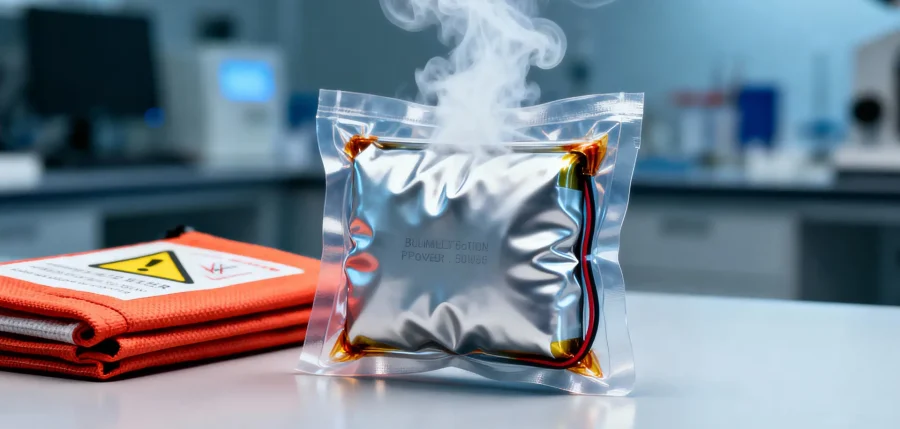
Fires and Explosion Risk
Swollen lithium batteries are prone to exploding and fire risks. They have immense pressure, which causes the outer casing to rupture, leaking flammable materials. They tend to burn and explode when exposed to flames or high temperatures. Furthermore, they also have an internal short circuit risk, further exacerbating the explosion danger.
Device Performance Degradation and Damage
Reduced battery capacity, shortened lifespan, and decreased charging efficiency are the negative impacts of swollen lithium batteries on device performance. For drones, a swollen Lipo battery squeezes and damages the battery compartment structure, reducing the flight stability and flight time, and endangering the safety.
Health and Environment Hazards
A swollen battery generates harmful gases and poses a health risk. People who inhale these gases may feel dizzy and have difficulty breathing, damaging the respiratory and digestive systems. The electrolyte leaking from a swollen battery is corrosive and causes burns in contact with the skin.
Bulging lithium battery brings environmental challenge. The leaked electrolyte in a swollen lithium-ion battery is corrosive and toxic, contaminating soil and water sources. Heavy metal elements such as cobalt and nickel in batteries are difficult to degrade in nature, resulting in soil fertility decline and water eutrophication. To minimize the above risks, it is sensible to dispose of these swollen batteries by taking them to a professional recycling center.
We are committed to sustainability throughout the production process. Visit the Sustainability of CM Batteries to explore more detailed information.
How to Prevent a Swollen Li ion Battery?
Proper measures to prevent lithium battery swelling not only ensure the safe operation of the devices, but also prevent electrolyte and heavy metal pollution to the environment.
Advanced Technologies for Preventing Lithium Battery Swelling
Some superior technologies play a critical role in preventing lithium-ion battery swelling by monitoring status in real time and controlling temperature automatically.
1. Smart battery management system: Custom Lithium-ion battery pack integrates with BMS monitors voltage, temperature, and internal resistance in real time, cutting off overcharging and abnormal current flow to prevent imbalances in the battery’s internal chemical reactions.
2. Immersion Cooling Technology. It is an innovative heat dissipation method for enhancing the thermal management capability of a lithium battery pack.
3. LiPo battery cells have PCB protection boards to prevent overcharging, overcurrent, and short circuits, monitor and cut off abnormal current and voltage, and provide certain temperature protection.
Best Practices for Preventing Lithium-Ion Battery Swelling
1. Avoid overcharging. Keeping plugged devices is harmful to battery health. In fact, leaving the battery fully charged for extended periods accelerates battery aging. Keep the battery between 20% and 80% state of charge during use.
2. Keep the battery away from high temperatures. Avoid leaving your batteries in direct sunlight. Batteries are sensitive to extreme heat, which shortens battery life.
3. Choose a certified charger. Unmatched or poor-quality chargers produce unstable output voltage, which damages the battery. Selecting a custom charger from the manufacturer is essential.
4. Perform regular inspections. Unusual odor, excessive heating, and reduced runtime are signs of lithium-ion battery bulging. Early detection and treatment mitigate the risk.
What to do with a swollen lithium battery?
It is essential to handle the swelling lithium-ion battery as soon as possible. Here is a step-by-step guide for dealing with it.
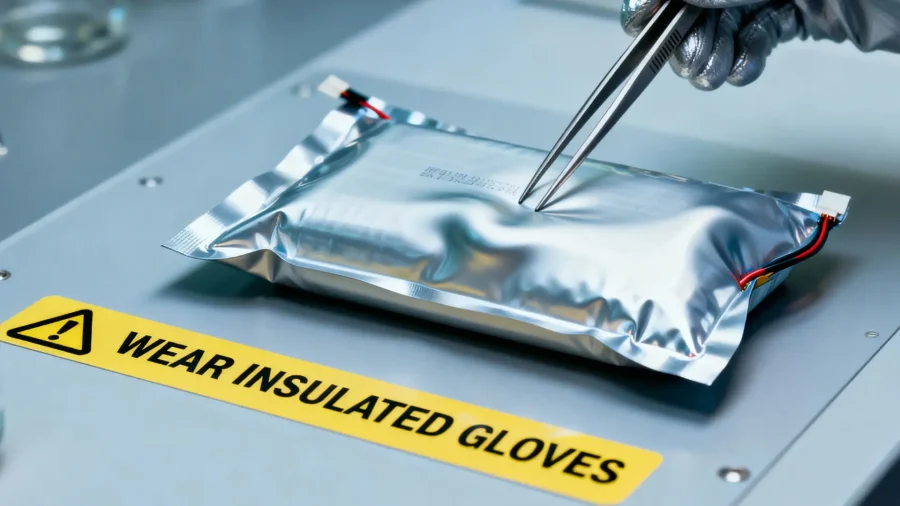
Step-by-step Guide to Deal with Lithium-ion Battery Swelling
Step1. Make preparations before removing
- Stop charging for swollen lithium batteries. Its internal structure may be damaged. Continuing to use it causes a short circuit, increasing the risk.
- Wear rubber gloves and goggles for safety. Avoid direct skin contact with the battery to prevent leakage and corrosion
- Place the expanded lithium battery in a ventilated and dry environment and avoid exposure to high temperatures.
Step2. Be careful when removing
- Remove the battery and place it in an insulated container.
- Keep gentle and avoid squeezing or colliding with the battery.
Step3. Proper recycling after removing
- Do not discard it at will. Contact the local environmental protection department or electronic waste recycling center for disposal.
Safety Warnings for Dealing with Swollen Lithium Batteries
1. Avoid crush and impact. Squeezing an expanded lithium battery causes an internal short circuit, instantly releasing a large amount of energy and potentially causing an explosion.
2. Do not heat the bulging lithium battery. High temperatures accelerate chemical reactions within the battery, making it highly susceptible to combustion.
3. Never disassemble an expanded battery yourself. The chemicals inside the battery react violently with air, creating a very dangerous situation.
FAQs about Lithium Battery Swelling
How long can a swollen battery last?
It’s impossible to accurately predict the time, as it varies depending on a variety of factors. A bulging lithium battery poses a safety hazard and can cause further damage within hours to days, such as internal short circuits, electrolyte leakage, or even fire and explosion. Therefore, if a bulging lithium battery is discovered, it should be discontinued immediately and handled in accordance with safety regulations. Never continue to use or attempt to repair it.
What does a swollen lithium battery look like?
First, casing swelling. The battery casing shows noticeable bulges or swellings and is round or oval in shape. Second, the battery has blunt edges and corners. A normal battery has sharp edges and corners, but swollen batteries tend to become rounded. Third, surface unevenness. The bulging battery surface shows cracks or damage. Fourth, the battery’s charging port is loose, deformed, or has increased gaps.
How to dispose swollen lithium battery?
Swollen lithium batteries pose a safety hazard and require careful handling. First, stop using a swollen lithium battery. Second, do not disassemble or discard the battery yourself. The internal chemical reactions of swollen batteries are unstable, and disassembling them is dangerous. Do not dispose of them with regular trash to avoid environmental pollution. Third, contact local battery recycling centers, e-waste recycling centers, or designated community drop-off points.
How to fix a swollen lithium battery?
It is not recommended to repair, because a lithium battery bulge poses a safety hazard. A bulging lithium battery damages its internal structure. Continued use causes explosion, fire, or electrolyte leakage, endangering personal safety. It is better to replace batteries with new ones and dispose of used batteries through a battery recycling agency to ensure safety.
How to temporarily store a swelling lithium battery?
For short-term storage, store swollen batteries separately in a dry, well-ventilated area away from flammable materials and high-temperature conditions. Wrap the battery connectors with insulating tape to prevent short circuits. Avoid squeezing or impacting the battery to prevent rupture.
Can a swollen battery explode if not plugged in?
Yes, there is still a risk of explosion of a swelling lithium-ion battery due to damaged structure. Squeezing, hitting, temperature changes, and short circuits accelerate battery chemical reactions that produce more gases, leading to an explosion. The electrolyte leaked from the ruptured battery shell may produce corrosive gas when it comes into contact with air, increasing the possibility of explosion.

